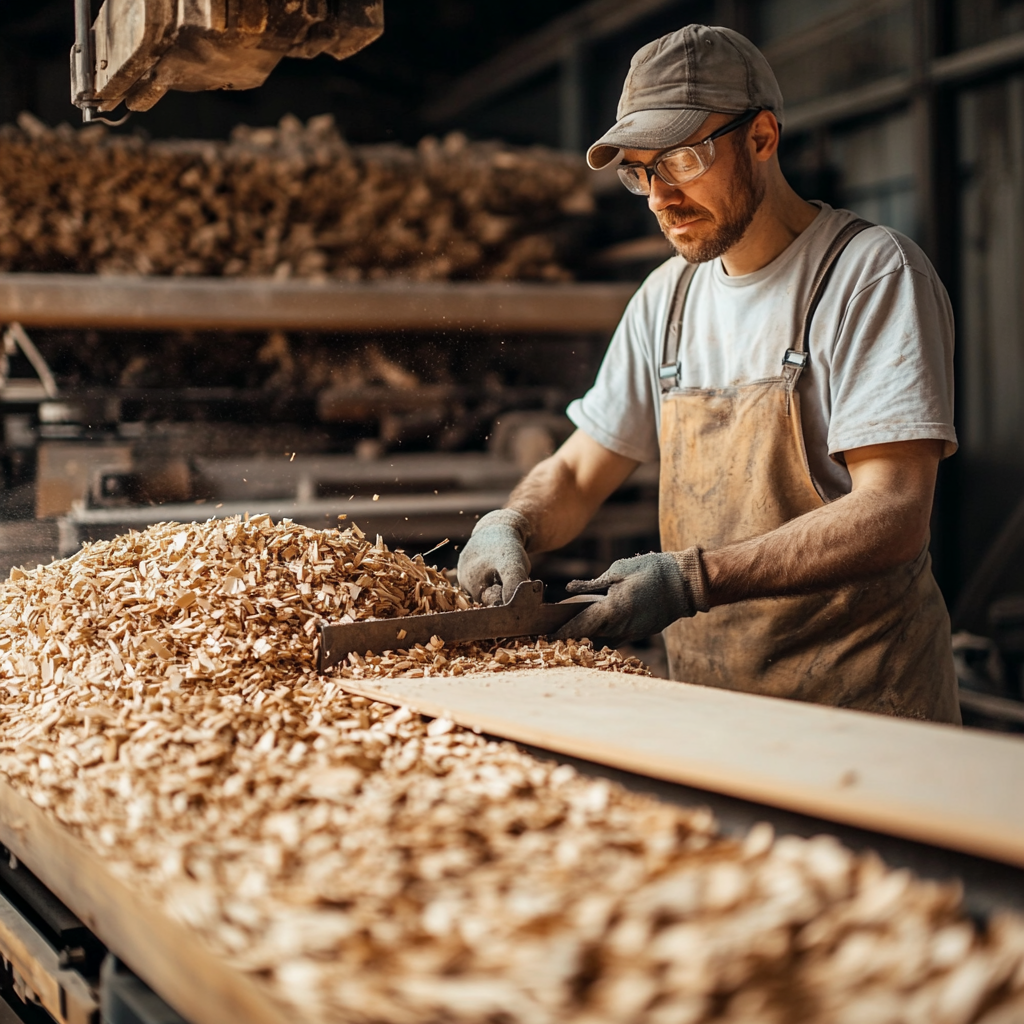Wooden cylinders are versatile elements used in various ways. In architecture, they serve as structural components, while in decor, they enhance visual appeal, such as in elegant table legs or stylish lamp bases. Furniture makers, architects, and designers value this product for its strength and ability to improve modern and traditional designs.
Additionally, they add a refined touch to any project, whether in a sleek chair, a classic column, or a unique decor piece. So, how are these cylinders crafted to achieve such precision and beauty? This blog explores the intricate processes behind their creation.
The Process of Wooden Cylinder Manufacturing
When it comes to crafting wood cylinders, details are everything. While the process is straightforward, it requires a meticulous approach to ensure each cylinder is made to perfection. Every phase is executed with care to produce cylinders that are both aesthetically pleasing and functionally robust.
Wooden cylinders have a unique way of transforming everyday furniture into something special. Their refined appearance and versatility result from careful attention to detail throughout the manufacturing process. Here’s a detailed overview of the manufacturing process:
Wood Selection
It starts with choosing the right wood, specifically suited to the product’s final requirements. The wood’s qualities, like texture and grain, are evaluated for performance and visual appeal. We prioritize sourcing wood that balances strength with aesthetic value.
Drying
After selection, the logs go through a drying process to reduce moisture levels. This step is vital for reinforcing the wood and avoiding future deformities. Controlled drying techniques prevent cracks, ensuring that the wood retains its form.
Initial Shaping
The dried logs are cut into more manageable sections. These pieces are then roughly shaped into cylinders using advanced machinery to match size specifications. This initial phase lays the groundwork for the more detailed work that follows.
Detailed Shaping
The rough cylinders are then refined with precision tools. This process involves adjusting dimensions and removing uneven areas to create a perfectly shaped cylinder. Careful attention is given to ensure each cylinder is consistent and balanced.
Surface Smoothing
Once shaped, the cylinders are carefully sanded to remove imperfections. This ensures a smooth, even surface that’s free of rough patches. The result is a polished finish that enhances the overall appearance and feel of the wood.
Protective Coating
Depending on the final application, the cylinders may receive protective finishes. This can include treatments to shield against moisture or enhance color with stains and varnishes. The coating not only protects but also accentuates the wood’s natural beauty.
Quality Check
The process concludes with a thorough quality inspection. Every cylinder is reviewed to ensure it meets exacting standards for craftsmanship and durability. This step guarantees only the finest cylinders are approved for use.
Customizing Wood Cylinders: Techniques and Tools
Techniques for customization range from basic alterations in size and shape to intricate carvings and decorative elements. Customizing wood cylinders involves several key techniques applicable across various manufacturing processes. Each technique contributes to achieving unique designs and meeting specific project needs.
Shaping and Turning
These are fundamental processes in customizing plywood cylinders, they define the basic form and dimensions of the cylinders. Using lathes and milling machines, manufacturers can achieve precise shapes and sizes, ensuring that each cylinder meets the design specifications. The quality of shaping and turning directly impacts the overall appearance and functionality of the final product.
Lathe Turning
The wood is mounted on a lathe, and the material is rotated while cutting tools shape it into cylindrical. This method allows for precise control over the cylinder’s dimensions and surface smoothness, making it ideal for creating uniform shapes.
Milling
A milling machine uses rotary cutters to remove material from wood blocks, producing cylinders with exact dimensions. This technique is useful for creating cylinders with specific sizes and can be employed for rough and fine shaping.
Surface Finishing
This process involves smoothing the wood surface and applying protective coatings to ensure longevity. Some techniques remove imperfections and treatments that protect the wood from environmental damage. Sanding is a method to improve the look of the wood and make the cylinders more resilient and attractive.
It is essential for achieving a smooth surface on wood cylinders. It removes rough spots and impurities, preparing the surface for finishing. Different grits of sandpaper or sanding machines are used to achieve varying levels of smoothness and texture.
Decorative Techniques
Methods like engraving and pyrography allow for intricate designs and custom patterns while inlaying introduces contrasting materials to create visually striking effects. These techniques not only enhance the beauty of the cylinders but also add a level of craftsmanship and artistry, making each piece distinctive and tailored to specific design preferences.
Engraving
Engraving involves carving designs, text, or patterns into the surface of the wood cylinder. This can be done manually with tools or using specialized machines for more intricate and precise designs. Engraving adds a personal or decorative touch to the cylinders.
Pyrography
Pyrography, or wood burning, uses heated tools to burn designs into the wood. This technique creates detailed, artistic patterns and can add a rustic or custom look to the cylinders.
Inlaying
This method involves embedding pieces of contrasting materials, such as different woods or metals, into the surface of the wood cylinder. This method creates striking visual effects and adds complexity to the design.
By incorporating these techniques, manufacturers can produce cylinder wood that is not only functional but also tailored to specific aesthetic and design requirements.
What Makes Wood Cylinders Unique

Wood cylinders are remarkable for many reasons beyond their basic usage. They are distinguished by several unique attributes that differentiate them from other materials. Each wood type used for cylinders can influence their final characteristics, making them suitable for various uses. Compared to materials like steel, concrete, or bamboo, wooden cylinders offer a set of benefits and features that are not easily replicated.
Here are some key factors that make cylinder wood unique:
- Expert Craftsmanship: Precision in turning and finishing results in smooth, excellent-quality surfaces.
- Natural Elegance: The unique grain patterns and finishes enhance the visual appeal and tactile experience.
- Custom Fit: Can be tailored to specific dimensions and designs to meet exact project requirements.
- Versatile Applications: Suitable for both functional support and decorative purposes, bridging aesthetic and structural needs.
Bringing Precision and Style to Every Project
At Keller Wood Products, we understand the importance of high-quality wooden cylinders for enhancing your designs. Whether you need standard shapes or custom creations, our expert team ensures every piece is crafted with precision and attention to detail. With over 75 years of experience in wood product manufacturing, we deliver reliable and expertly crafted solutions.
We specialize in a range of techniques to meet your specific needs, from shaping and finishing to intricate decorative elements. Contact us to discover how we can help bring your wood cylinder projects to life with exceptional craftsmanship.

